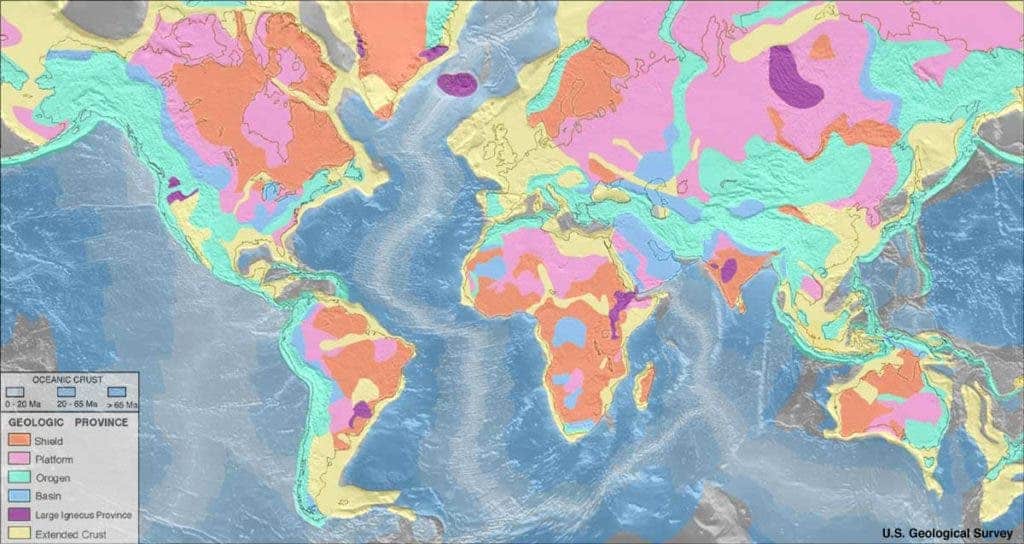The Earth might have developed its continental crust much earlier than believed, new research reveals. The findings could have major implications for how we think about the evolution of life on our planet.

Image credits United States Geological Survey.
Strontium atoms locked in rocks from northern Canada might rewrite the history of life on Earth. According to new research from the University of Chicago, they suggest that continental crust developed hundreds of millions of years earlier than previously assumed.
Crustally fit
“Our evidence, which squares with emerging evidence including rocks in western Australia, suggests that the early Earth was capable of forming continental crust within 350 million years of the formation of the solar system,” says first author Patrick Boehnke.
“This alters the classic view, that the crust was hot, dry and hellish for more than half a billion years after it formed.”
There are two types of crust covering the Earth: oceanic, which is basically solidified magma, and continental, which is less dense and has a different chemical make-up — most notably, a much higher content of silica. We know that all crust starts out as the oceanic kind, and continental crust later develops on top of this. Geologists have been trying to determine how and at what point continental crust first appeared ever since we’ve known there is such a thing as ‘continental crust’.
However, that’s easier asked than answered. Part of the problem is that the Earth’s crust is continuously recycled over geological timescales — it sinks, melts down, and reforms. This also destroys the evidence geologists would need in order to back-track the process of continental crust formation.
Some fragments of these ancient bits of crust can still be found today, embedded into young rocks as flakes of the mineral apatite. But if they’re not perfectly insulated, they will degrade over time through oxidation, interaction with water, or other chemical and mechanical means.
Luckily, some of the younger minerals also include some that are very durable, such as zircons. These are hardy materials, similar to diamonds, that are very weather-resistant. Even better for a geologist with a mission, zircon can be dated.
“Zircons are a geologist’s favorite because these are the only record of the first three to four hundred million years of Earth. Diamonds aren’t forever — zircons are,” Boehnke said.
The team used strontium isotope analysis to date rocks retrieved from sites in Nuvvuagittuq, northern Canada to determine their age and the amount of silica present as it was forming. Because the flakes of rock they recovered were incredibly tiny — about as thick as a strand of spider silk, five microns across — the team had to use chili.
More specifically, they had to use CHILI (all capitalized). This unique instrument, the Chicago Instrument for Laser Ionization, came on-line last year. It uses laser beams that can be tuned to pick out and ionize strontium atoms, allowing the team to count them. The results of this counting process suggested plenty of silica was present when it formed.
The chemical composition of the crust tells us a lot about the state of the Earth at the time — our planet is like one huge chemistry jar, and every component interacts with all others. Crustal composition directly affects the atmosphere, for example, mostly through oxidation effects. It also alters the composition of seawater and dictates what nutrients are available to any potential organisms. The fact that Earth sported continental crust that early, and that is was so chemically similar to that of today, suggests that conditions at the time weren’t that different from those today. That doesn’t mean the continents looked like they do today (because they didn’t) but geochemical conditions should have been pretty similar to those today.
It could also be a sign that fewer meteorites hit Earth at this time than we assumed — these would pummel the planet, making it hard for continental crust to form.
The findings also suggest we need to take a second look at the processes we believe create continental crust: if the team’s findings are true, they need to work much faster than current models assume.
The paper “Potassic, high-silica Hadean crust” has been published in the journal Proceedings of the National Academy of Sciences.


